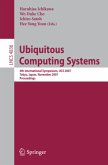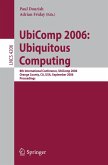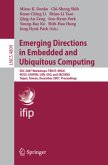The birth of RFID technology is credited to the 1948 research paper by H. Stockman on "Communication by Means of Re?ected Power" [109]. After describing the main principle of communication by re?ection and reporting his experiments, he concluded that "Evidently, considerable research and development work has to be done before the remaining basic problems in re?ected-power com- nication are solved, and before the ?eld of useful applications is - plored. " It turns out that in fact this work required almost 60 years of science and engineering before it was mature enough to ?nd its way into large-scale - plications. This is surprising, as at ?rst glance RFID is a simple technology that is straightforward to implement. And yet, its dull appearance hides great complexity: RFID involves several engineering disciplines, including systems, networking and software development, antenna design, radio propagation, - tegratedcircuittechniquesincreasinglyfocusedonprintedelectronics,receiver design, encryption and security protocols, and materials technology, to m- tion but a few. In this book, I attempt to present the main ingredients for building c- plete network RFID systems, written for a knowledgable computing audience. I hope this book will help practitioners and researchers alike in establishing a robust framework for thinking about rfid. I also hope that the book will help anyone involved with rfid technology to make informed decisions that are appropriate for their particular problem at hand.
From the reviews:
"Radio frequency identification (RFID) is now being accepted by the business community, despite the fact that it still has its challenges. ... It is important for engineers to know about this technology, its implementation, and problems presented by RFID. This book promises to fill this gap and it does so quite successfully. ... If you are new to RFID technology, this book may be a good start as an overview. Engineers will like this book. It is highly recommended." (Arun Ektare, ACM Computing Reviews, December, 2008)
"Radio frequency identification (RFID) is now being accepted by the business community, despite the fact that it still has its challenges. ... It is important for engineers to know about this technology, its implementation, and problems presented by RFID. This book promises to fill this gap and it does so quite successfully. ... If you are new to RFID technology, this book may be a good start as an overview. Engineers will like this book. It is highly recommended." (Arun Ektare, ACM Computing Reviews, December, 2008)








